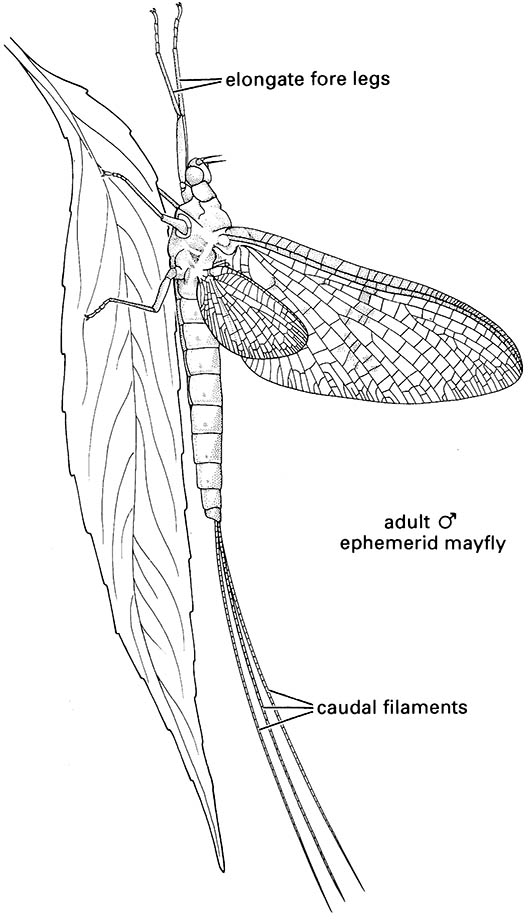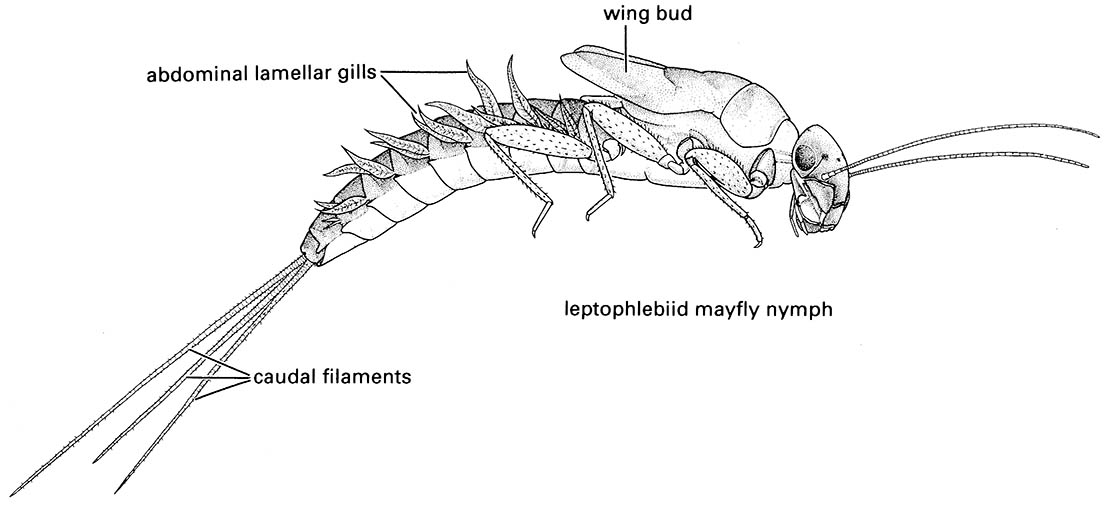Box 10.1. Ephemeroptera (mayflies)
The mayflies constitute a small order of some 3000 described species, with highest diversity in temperate areas. Adults have reduced mouthparts and large compound eyes, especially in males, and three ocelli. Their antennae are filiform, sometimes multisegmented. The thorax, particularly the mesothorax, is enlarged for flight, with large triangular fore wings and smaller hind wings (as illustrated here for an adult male of the ephemerid Ephemera danica, after Stanek 1969; Elliott & Humpesch 1983), which are sometimes much reduced or absent. Males have elongate fore legs used to seize the female during the mating flight. The abdomen is 10-segmented, typically with three long, multisegmented, caudal filaments consisting of a pair of lateral cerci and usually a median terminal filament. Nymphs have 12–45 aquatic instars, with fully developed mandibulate mouthparts. Developing wings are visible in older nymphs (as shown here for a leptophlebiid nymph). Respiration is aided by a closed tracheal system lacking spiracles, with abdominal lamellar gills on some segments, sometimes elsewhere, including on the maxillae and labium. Nymphs have three usually filiform caudal filaments consisting of paired cerci and a variably reduced (rarely absent) median terminal filament. The penultimate instar or subimago (subadult) is fully winged, and flies or crawls.
The subimago and adult are non-feeding and short-lived. Exceptionally, the subimagos mate and the adult stage is omitted. Imagos typically form mating swarms, sometimes of thousands of males, over water or nearby landmarks. Copulation usually takes place in flight, and eggs are laid in water by the female either dipping her abdominal apex below the surface or crawling under the water.
Nymphs graze on periphyton (algae, diatoms, aquatic fungi) or collect fine detritus; some are predatory on other aquatic organisms. Development takes from 16 days, to over one year in cold and high-latitude waters; some species are multivoltine. Nymphs occur predominantly in well-oxygenated cool fast-flowing streams, with fewer species in slower rivers and cool lakes; some tolerate elevated temperatures, organic enrichment, or increased sediment loads.
Phylogenetic relations are discussed in section 7.4.2 and depicted in Fig. 7.2.



Broken lines indicate uncertain relationships. Thysanura sensu lato refers to Thysanura in the broad sense. (Data from several sources)



